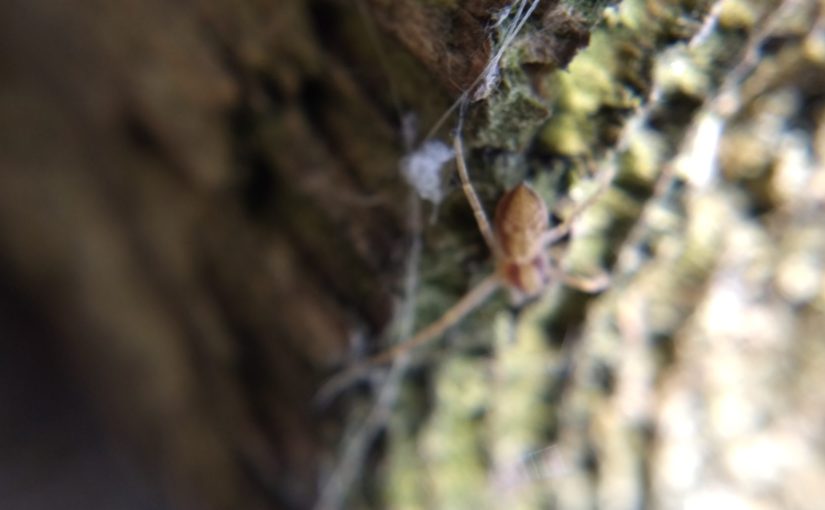The reference, for those of you lucky enough not to recognize it.
Recently I found a tiny four-legged running crab spider (family Philodromidae) in Trinity-Bellwoods and brought it home to keep temporarily until it grew its legs back. It was so small that I could keep it in a 45 mL plastic cup with a tiny chip of bark. I fed it sugar syrup on the end of a Q-tip, and then (as it was too small and terrified for the flightless fruit flies I raise for Sabella, my pet black widow) I made it a (disgusting) fruit fly-and-syrup mush to drink. It soon molted and grew back three legs, and was then big enough to catch fruit flies. I think it grew back the last leg its next molt, but perhaps dropped it again when it nearly escaped one night as I tried to feed it—a sign, to me, that it was time to release it. I made sure it ate again, then set it free at the spot in the park that I found it. It immediately caught a small green plant bug and raced off, lightning-fast and good as new.
I chronicled the whole thing on Mastodon, and received many replies from people who had no idea spiders could regrow legs! So here is a proper post about the phenomenon.
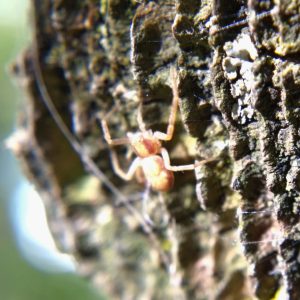

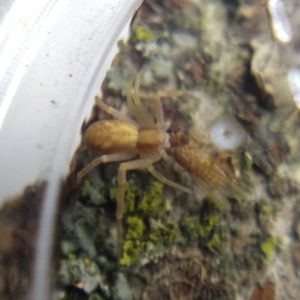
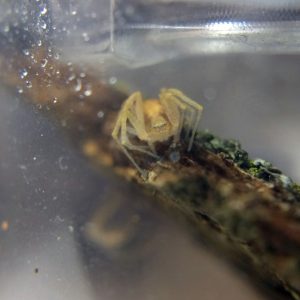
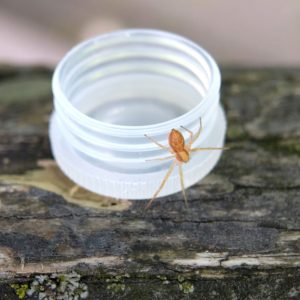
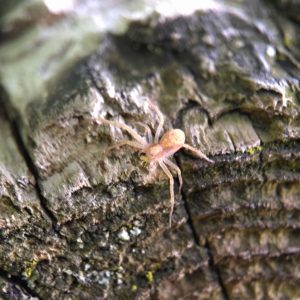
Like lizards dropping their tails or house centipedes losing legs, (most) spiders can voluntarily detach legs as a defensive measure. It’s called autotomy (auto, self, like “autobiography”; -tomy, removal, like “tracheotomy”). It’s especially important because spiders extend two key leg joints not with muscles but by moving pressurized haemolymph (spider “blood”),1 and a break in their exoskeleton can severely incapacitate them—like poking a hole in an inflatable boat. So most spiders have a mechanism that neatly seals off severed limbs at the coxa, the stubby first segment of the leg that attaches to the spider’s body.
Spiders, like all arthropods, also periodically molt to grow.2 Unlike many insects that undergo dramatic metamorphoses from worm-like larvae to lumpy pupae to winged adults, spiders start out looking more or less like smaller versions of their adult selves. Over successive molts, they gradually develop the complex organs that allow them to reproduce and acquire their adult body shapes, colouration, or patterns.3 Molting also gives them an opportunity to regenerate lost limbs—not just legs, but apparently also appendages like pedipalps or spinnerets.4 For the sake of simplicity, I’ll just talk about legs.
A certain length of time after a spider’s last molt, it starts to grow a new exoskeleton inside the old one—a little like new skin growing under a scab. This is pretty straightforward for existing legs, but when a leg has been lost, the whole new leg has to take shape all folded up inside the only remaining segment, the coxa.
Once molting is imminent, a spider enters “premolt”. It stops eating and secludes itself in a retreat or in its burrow for a few days. They typically molt hanging upside-down from a thread, which makes things easier later on. (Spiders that are too heavy to hang from silk, like tarantulas, usually molt lying upside-down.)
Here’s a video I took last year of a similar running crab spider molting.
Spider molting starts with the rigid, helmet-like top half of the cephalothorax (the front body segment) popping off, like the lid coming off a tuna can. The softer, flexible exoskeleton covering the abdomen peels off and shrivels up all in one piece, and before it completely detaches the spider uses its spinnerets to tether itself to the old exoskeleton.
The last part that must detach is the bottom of the cephalothorax, where the legs and mouthparts attach to the body. This is the most complicated and delicate stage. The spider twists its abdomen and gently flexes its soft, noodly new legs to ease them out of the hard casings of the old ones. It’s a bit like trying to work your way out of sweaty skinny jeans while lying on your bed, without using your hands; this is why hanging upside-down helps.
After the legs are free, the spider spends a while stretching and folding them to get the joints right and pumping haemolymph around its body to stretch everything out before the exoskeleton sclerotizes (hardens). This is when new limbs get straightened out. Because of the limited space to grow, regenerated limbs are smaller than normal, and they are typically almost colourless. Otherwise, they are functional and more or less fully-formed. Over successive molts, a regenerated leg can become indistinguishable from the rest. A regenerated leg can also be autotomized and regenerated later on.
There are, of course, limits to the process. There is a kind of “cutoff date” to start regenerating a leg: if it’s been too long since the last molt, the new exoskeleton has already started developing and it’s too late to make a new leg. Also, most of the types of spiders you can probably think of—orbweavers, wolf spiders, jumping spiders, grass spiders, and so on—are rather short-lived and have a fixed number of molts. Their final molt is when they become sexually mature, and if they lose a limb after that, they’re stuck that way. (Spiders like tarantulas, purse-webs and trapdoors are much more long-lived, and they continue to molt throughout their lives, even once fully mature. However, the larger and older a spider gets, the more lengthy and difficult the molting process becomes, so it is not undertaken often.)
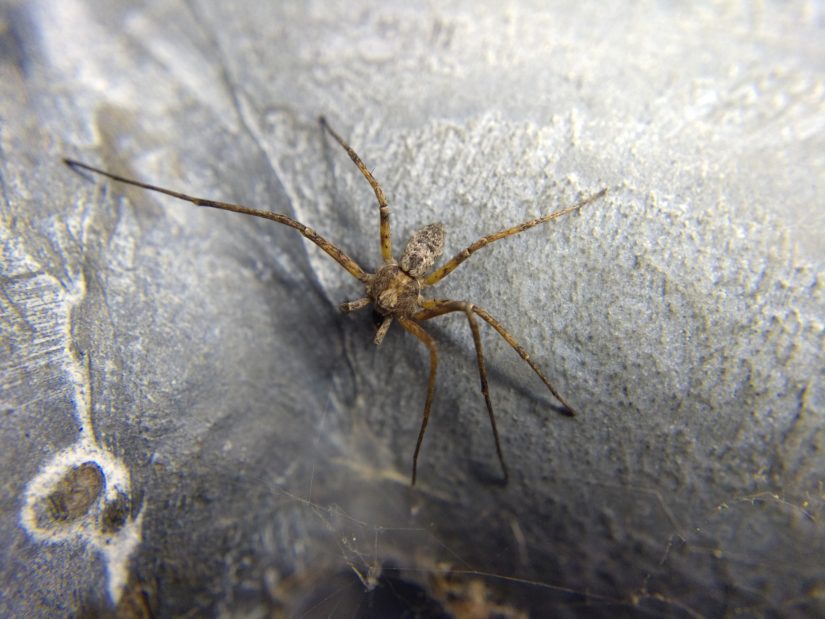
Losing one or two legs doesn’t even slow a spider down, but once you get to, like, three missing legs, it starts to become a liability. (This is more of an issue for the more mobile, active spiders, like running crab spiders, than for spiders with a more sedentary lifestyle. I’ve seen a female Zygiella orbweaver with three legs, a good size and entertaining multiple suitors.) A spider that’s lost too many legs may not be able to survive to the next molt. This is why I felt the need to rescue the running crab spider. But even a spider missing all its legs can molt them all back, if it is kept safe and fed by hand; this has been documented many times! See e. g. this before and after from Australia.
I double-checked all of this with Rainer F. Foelix’s Biology of Spiders (3rd ed.), 2011, University of Oxford Press, which you can consult for more details. Some of the more intriguing bits, like spiders being able to regenerate other kinds of appendages, are attributed to Pierre Bonnet’s 1930 thesis “La mue, l’autotomie et la régéneration chez les Araignées” (“Molting, autotomy and regeneration in spiders”), which I cannot find online; if anyone has access to it, let me know!
- Most spider leg joints have both flexor and extensor muscles which, respectively, bend and straighten the joint. However, the “knee” joint (between the femur and patella) and the next joint down (between the tibia and metatarsus) only have flexor muscles, and these joints are extended hydraulically by changing haemolymph pressure. This is why dead spiders’ legs naturally curl up in the so-called “death curl”. ↩
- Crustaceans, insects, centipedes and millipedes, springtails, arachnids, horseshoe crabs, sea spiders, and more. This doesn’t include some other creatures commonly considered “bugs”, like earthworms. ↩
- Many species of widow spiders (Latrodectus), for instance, start their lives brown rather than black, with white and red stripes and spots on their backs. As they grow up, females start to lose these patterns and become jet-black all over aside from a red hourglass on the underside and maybe a few small red markings on their backs. ↩
- Developmentally speaking, these are modified legs, and so it makes sense they can regenerate in the same way. I don’t think far more modified limbs like book lungs work the same way, though. But that’s a whole other can of worms… ↩
